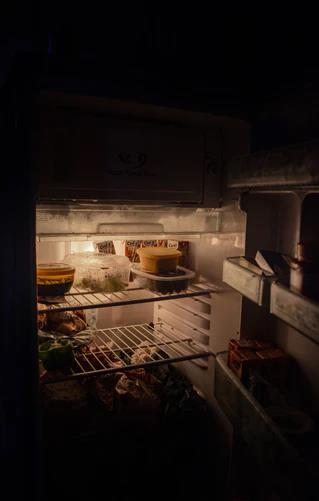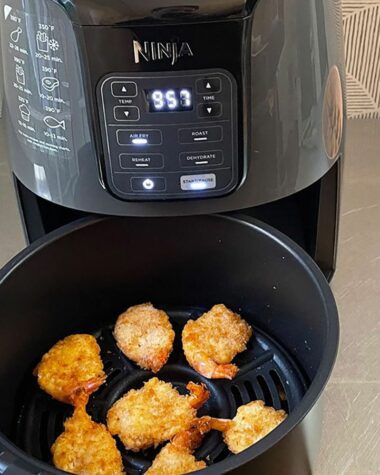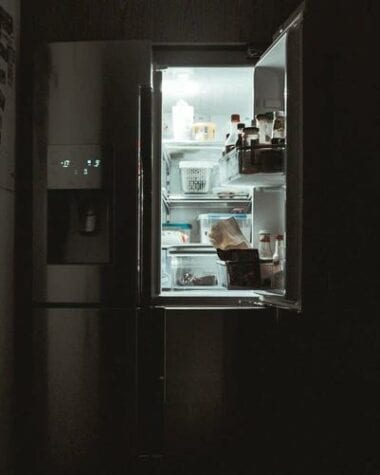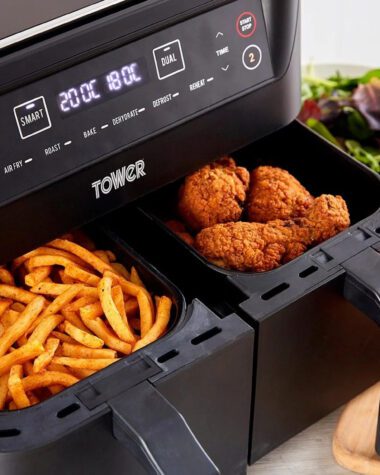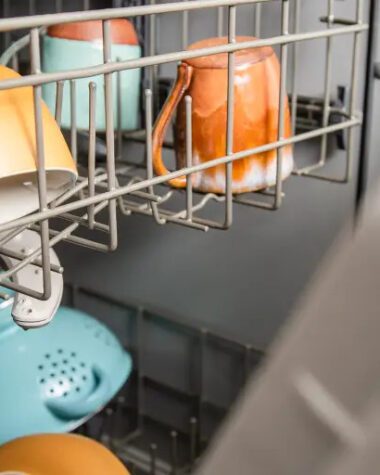Have you ever gone for a walk to the kitchen late at night to have a snack and noticed a pool of water in your refrigerator? We hate to break it to you, but your refrigerator drain hose is most likely clogged. But don’t worry; you can quickly and effortlessly fix it yourself! Come along because we here at DaDongNy will dive deep and explore the common reasons and solutions for congested refrigerator drain tubes.
What Is The Purpose Of The Drain Tube On Your Refrigerator?
It is standard for a refrigerator to undergo the process of a self-defrost cycle to maintain its cleanliness. This cycle increases the temperature within the refrigerator, which can produce more water and moisture. In a standard refrigerator, the water will run through the drain into a pan at the bottom, where it will vaporize. This process keeps your fridge operational and lets the water safely dissipate.
A drain is often located underneath your cooling equipment. Some refrigerator units have drains outside the doors, allowing defrost water to pass through, whereas others do not. If your device doesn’t have a drain, the tube could be found on the right portion of the unit.
Indicators Of A Clogged Drain Tube
When the drainage tube on your refrigerator becomes congested and refuses to drain the water away, you will most often observe water pooling within the refrigerator. Other signs of a clogged drain tube also include the following:
- The freezer chamber is filled up with ice;
- There is a noticeable frosty coating surrounding the coil or the panels all around the coil;
- There’s a pool of water under the vegetable drawers or at the bottom of the fridge;
- And a terrible stench emanates from your refrigerator, similar to alcohol.
The Causative Factors Of A Clogged Refrigerator Drain
There are several reasons why your refrigerator’s drain tube is becoming clogged. Among the most common reasons are:
- Water Overflowing
A drain could also get disrupted if your equipment absorbs too much water from internal breaches or immediately discharges water from the bottom of the fridge.
- Leakage
If your refrigerator has any leakage, this can produce an obstruction, resulting in a clogged drain tube. If you see any drips or leaks, double-check whether they’re flowing from the drain tube and not on the other parts of your refrigerator.
- Condensation
Condensation could accumulate within your refrigerator if your appliance cannot ventilate properly. That’s because the water would overflow, and this might create a clogged drain tube.
Remember that refrigerators must be allowed to ventilate for at least 10-20 minutes each day to avoid further problems.
- Clogged Drain Due To Food Debris
A drain can get blocked for several different reasons. One of the most common reasons is food and other waste being stuck in the drain tube. Pouring grease, lard, or condiments such as mustard and ketchup into the drain can generate an obstruction.
- Food Contamination
Food wrappers can also pile up within the drain tube if there is a liquid spillage within your refrigerator. However, this is very uncommon. With that, bits of food can then tumble into the drain, thus blocking it.
- Ice Accumulation in the Refrigerator
Ice accumulation can trigger a clog even if no debris is stuck in your drain tube. When the refrigerator or freezer compartment is entirely covered, the temperature inside the fridge can plunge below what is normal. The discharged water inside the drain tube could freeze due to the lower temperature. When drained water encounters an ice blockage, it leaves no room for it to drain, resulting in potential leaks in your refrigerator.
A Clogged Drain Can Lead To Leaking Refrigerators
A blocked drain is one of the most common sources of refrigerator leaks. Running refrigerators can gather moisture in the refrigeration lines of the freezer.
The humidity causes the coils to freeze. The refrigerator then enters defrost mode every 6-48 hours to dissolve the ice developed during chilling cycles. The water runs down the drain and into a pan, dissipating before the subsequent defrost cycle.
If a drain becomes clogged, water could go back up inside the freezer. This water will ultimately infiltrate the fresh produce compartment and the floor.
In addition, if the water is not removed, it will freeze in the air conduits, causing the refrigerator to stop chilling.
Water will accumulate in the bottoms of side-by-side, bottom-freezer, and top-freezer refrigerators, causing water to leak through the door down to the floor after the bottom of your fridge has frozen. Here’s how you can deal with them:
- Side-By-Side
On most side-by-side refrigerators, accessing the drain is simple; in other cases, the drain may be accessed without turning a screw. Open the freezer door and peek down at the bottom to check whether you can see your drain tub. Otherwise, you must remove the evaporator cover, which is situated on the back of the freezer compartment. If you must remove the evaporator cover, ensure the refrigerator is turned off.
- Top-Freezer
Depending on the model, attempting to access the drain tube on a top freezer varies. Several contemporary top freezers manufactured after the 2000s feature a solid drain below the lining of a refrigerator, which means that the sole entry point is within the freezer. The drain comes out of the rear of the refrigerator approximately halfway down on some newer versions and practically all older models.
- Bottom-Freezer
Depending on the model of your refrigerator, the drain tube on the bottom freezers might need help to reach. Remove the door to access the drain on models with a drawer-style door on the freezer. Then remove the evaporator cover at the back of your freezer once the door has been removed. You can see the drain underneath the coils when the cover is removed.
Simple Techniques For Cleaning A Refrigerator Drain Tube
Suppose you are familiar with the manufacturer and model of your LG refrigerator and have significant expertise in DIY jobs. In that case, you can easily fix a blocked drain tube. Here are some tips for keeping your fridge in ideal working condition.
But first, unclogging a congested drain tube is a simple task that requires quite a lot of equipment. At the very least, you will need the following:
- Screwdriver
- ¼ flex tube
- A plastic syringe or turkey baster
- Portable cooler to store frozen food
Step #1: Move Away The Refrigerator
Move your refrigerator several feet from the wall for safety and more working space. And since cleaning the drain tube could require considerable time, take any frozen foods from the freezer and place them safely in a cooler until you’re done.
Step #2: Find The Drain Tube
Every refrigerator manufacturer puts their refrigerator’s drain tube for defrost cycle in a different location. The drain tube is underneath the fruit and vegetable compartment, at the bottom of the refrigerator or your refrigerator’s freezer section.
Furthermore, finding your owner’s handbook or researching the model online can assist you in identifying the drain tube more quickly.
Step #3: Disconnect The Drain Tube
Examine the drain tube carefully for any food scraps or ice accumulating and causing the drain tube to clog. If you notice some ice build-up, you can melt it with a dryer set to a low heat setting to dislodge the blockage. Run the hairdryer evenly across the drain tube line to avoid overheating and potential drain tube damage.
Step #4: Clean The Tube Carefully
You may gently push debris through the drain tube with a screwdriver or a small piece of ¼ inch metallic wire if food scraps or ice chunks are jammed inside the tube. Using the screwdriver or flexible hose, slowly push the debris into the drain until it reaches the pan. Be careful to use just a little pressure, and if you forcefully push the screwdriver through the delicate drain, you can risk puncturing it and causing leakage.
Step #5: Clear The Drain Tube
Clean the drain using hot water and a mild bleach solution. You can use a big plastic syringe or a turkey baster. Washing the drain tube will eradicate debris or undetected accumulation during the initial visual inspection.
Step #6: Empty The Pan
If your refrigerator hasn’t been draining smoothly for a while, and you’ve recently flushed the hot water solution through the drain tube, chances are your drip pan is full. To avoid spills, empty the drip pan, which is located underneath your refrigerator.
Dadongny’s Tips For Cleaning Refrigerator Drain Tube
- To avoid repeating the above mentioned procedure, cleanse the drain tube every other month to guarantee that nothing accumulates within.
- If the debris clogging the drain tube is ice, use a low-heat hair dryer to melt it away and clear up the tube. The goal is not to overheat the tube.
- Depending on its brand and model, the drain tube is located differently in different refrigerators. That is why you want your user’s manual to identify it in your appliance.
Avoiding Unforeseen Clogs In The Future
Please empty the drain tube of your refrigerator to avoid potential difficulties, including costly spills that can affect not just your appliance but also other parts of your kitchen.
Maintaining your refrigerator in excellent working condition can help in keeping the drain tube clean. Keep in mind to flush the drain tube once every two to three months with a solution of hot water and mild bleach. This method keeps your drain flowing, allowing defrosted water to flush away from your refrigerator and completely evaporate.
FAQs
- What’s The Most Common Source For Refrigerator Leaks?
The most common cause of a refrigerator leak is a blocked drainage tube. The defrost cycle in self-defrosting refrigerators happens every 4-6 hours.
This defrost cycle provides enough chances for a clogged drain line to become a major disaster. If you find a leak in your refrigerator, check the drain tube, as this is the first place a technician would usually inspect.
- Why Is My Drain Tube Freezing?
If your drain tube is often blocked with ice, the problem might be more than an accumulation. The first probable cause of ice in your drain tube could be that the temperature in your refrigerator or freezer is set incorrectly. Water would freeze before it could properly flow into the drip pan.
The second could be dirt that has yet to be entirely drained from the pipeline causing water to freeze quickly.
And lastly, an air migration into the drainage tube could be causing the water to freeze more quickly than usual. Placing a trap above the drain tube can help keep air out of the drainage system.
If none of these measures work, you might have a problem with the coils on your refrigerator. If the coil is frozen, this could indicate that your refrigerator’s defrost cycle is not working properly.
Bottomline
Most Whirlpool refrigerator problems, such as clogged drains, are easy to fix. We hope the guidelines we have provided above will assist you in resolving the problem before it causes further problems.
The key to most of these repairs is to ensure your refrigerator is turned off so you don’t get electrocuted if water comes into contact with anything it shouldn’t.
Additionally, remember that regular cleaning is essential for preventing obstruction in your refrigerator drain tube.
To learn more about refrigerators and how this valuable piece of equipment chills the food and beverages inside, check out the post here.
Articles You May Be Interested In
- A Cooler Choice: Whirlpool v.s GE Refrigerators (Full Guide)
- Refrigerator Check: LG v.s Samsung Refrigerators (Full Guide)
- Cool Tech Showdown: Frigidaire v.s Whirlpool Refrigerators (Full Guide)
- Fridge Favorites: Bosch v.s LG Refrigerators (Full Guide)
- Cooling Conundrum: Whirlpool v.s Samsung Refrigerators (Full Guide)
- Tale Of The Tape: Maytag v.s Whirlpool Refrigerators (Full Guide)
- Fridges in Focus: Thermador v.s Sub-Zero Refrigerators (Full Guide)
- Fridge Frenzy: Sub-Zero v.s Viking Refrigerators (Full Guide)
- The Big Chill: Whirlpool v.s KitchenAid Refrigerators (Full Guide)
- Refrigerator Bout: Whirlpool v.s LG Refrigerators (Full Guide)

